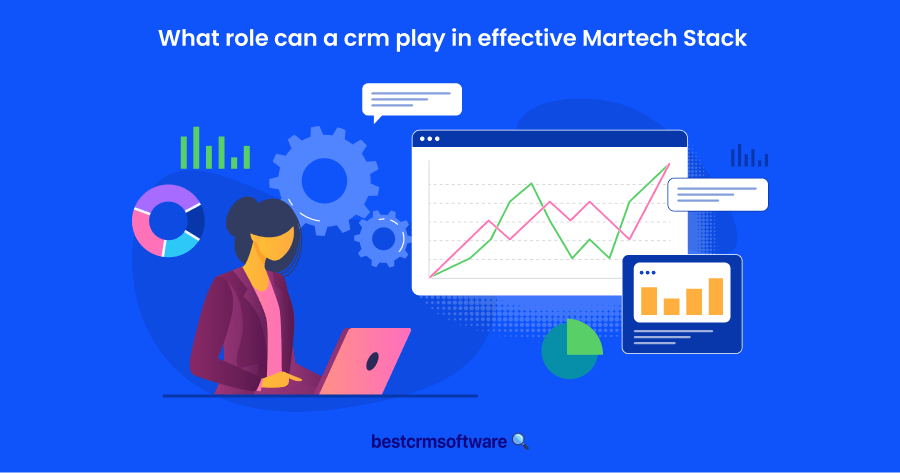
Overcome CRM Adoption Challenges and Maximize Your ROI
Key Takeaways
- CRM adoption refers to a percentage of purchased user seats being used actively.
- A low adoption rate means the company might be wasting the money it has paid to acquire access to unoccupied seats.
- If a company’s CRM adoption is poor, it might face several risks, including overbudgeting, decreased ROI, timeline delays, and inability to scale.
- For CRM adoption to be successful, companies must understand their business objectives and the type of CRM they need. Their roles in leading their employees to manage the software properly will also contribute to the success of the implementation.
- CRM adoption can be challenging, and each challenge may provide a risk that stops the company from maximizing the software’s potential.
Introduction
One of the most important things to maintain when you own a business is your customer relationship. Managing and maintaining relationships can be challenging, depending on your team’s skill and the scale of your business.
That’s why businesses use CRM or Customer Relationship Management software to make it more manageable. By using the software, companies can increase the effectiveness of their progress and fulfill their end-to-end sales process.
Most CRM software offers automation, making your tasks even more manageable. Once you optimize your chosen CRM software, you can improve your business relations through interactions and management relationships management.
Everything I said might sound easy, but implementing CRM tools still presents challenges. If you don’t understand how to adopt the software properly, your process might stall rather than become effective.
To ensure you and your business don’t face these challenges, I’ll give you a thorough overview of CRM user adoption and its challenges. Hopefully, you’ll be able to use CRM smoothly and increase your business’s ROI.
What is CRM Adoption?
When a company uses a CRM platform, the CRM usually offers a pricing plan for only one member. If the company has a team of several people who need to use the platform, they must purchase according to the number of users.
CRM adoption refers to the percentage of users given access by one company compared to the number of users using the platform. By looking at the CRM adoption rate, you’ll get an insight into how many members are actively using the service.
For example, when a company has 100 employees who need access to CRM software, but only 70 people use it, the rate is 30%. This is important for a company to know, as providing a CRM seat for an employee costs them money.
If there’s a high adoption rate, it’s proof that most employees with access to the software regularly use it. A low rate means many members aren’t using the access, yet the company keeps paying for their seats.
Many companies look into their adoption rate due to the high-risk nature of business. Around 63% of large organizations are estimated to fail, a high statistic that can be alarming to business owners.
It becomes a question whether CRM can deliver the needed result. However, studies also show that companies that have successfully adapted CRM and effectively use it are experiencing significant benefits and valuable outcomes.
If you have a big organization that has bought access for many of your employees, yet your CRM adoption rate is low, it’s time to look more into it. Your CRM will only be a good ally if your employees take advantage of it and can effectively use it.
Risks of Poor CRM Adoption
If your CRM adoption rate turns out to be alarmingly low, your business might face several risks. Keep a close eye on these risks to avoid sinking your entire ship.
Wasteful Resources
One of the biggest fears of big business owners is overbudgeting. Once you see your financial report and find that you’ve been spending more than you’re profiting, it might risk your entire company.
I’ve mentioned that when your CRM adoption rate is low, you’re paying for something that contributes nothing to your business growth. Finding the signs early on will help you avoid overbudgeting due to low CRM adoption.

Messing Up Your Timeline
Using a CRM means you have a goal of when you’ll move things around after the software works its magic. However, data and lead migrations to a new CRM system can take a while to finish, sometimes even longer than you’ve expected.
This risk is also connected to cost risk. Once the migration process goes wrong, you might pay for two CRM systems to help speed up the transfer process.
On the other hand, your team must also work extra hard to manage two systems. They’ll have to split their focus between managing the new data and migrating the old data.
Wasting More Time to Learn
Each CRM system has its workflow and features. Some can be easy to learn, while others have a steep learning curve affecting your team’s productivity. With a complicated CRM system on their hands, your team might even take weeks to use the new system effectively.
You’ll probably hand the software to your sales division. If all of them are spending their time learning, they might be able to sell any product. No sales mean you’ll earn no profit until your sales team finishes learning the system.
Inability to Scale Up
Even after finding the best CRM software that works well with your system, a low adoption rate can create a problem in the long run. All kinds of businesses require flexibility and the ability to adapt to the ever-changing demand.
If you or your team don’t understand the CRM you’re using well, you might be forced to buy a new system. Although a specific software might seem like the best fit for your business, it might not be once it grows.
When it’s time to scale up, you might find yourself tangling with software that no longer works. Some CRMs are limited, so understanding the system thoroughly before buying it would help you avoid this.
Lower ROI
When your company can’t adopt a CRM properly, it’s likely to face a decreasing ROI. Any CRM system can be an outstanding ally that boosts your business, but if you or your team don’t know how to maximize that potential, it’ll hurt your company in the long run.
Inaccurate Data
You might be leaning onto your CRM system without knowing they’re poorly operated. If you notice that your business isn’t performing well even after implementing the software, there’s a chance you’ve been referring to inaccurate data from the system.
Inaccurate data can affect your decision-making, and there is a risk of making the wrong decision. It can also lower customer relationships.
The Best Way to Adopt CRM and Its Benefits
Now that I’ve told you about the risks of poor CRM adoption, let’s look at the brighter side. If your team successfully implements a sound CRM system, you might be in for a treat. So, let me share some knowledge about how to use a CRM.

Understand Your CRM
Before you purchase any CRM system, thoroughly understand what you’re buying. Check everything the CRM supports, determine its limitations, and compare it to your business’s vision.
You must also consider the cost of implementing the CRM and whether it offers a good value for its price. CRMs tend to offer several pricing plans with different features.
I suggest not immediately buying the highest-priced plan because you can afford it. Sometimes, the all-inclusive package is a waste of money. Buy the plan that aligns with your business objectives so you don’t exceed the budget.
You can also see if the CRM system provides team training or only offers it as an add-on. Compare each CRM system to forecast your budget, and if you need a homegrown CRM adoption instead, make a wise decision.
Lead Management Effectivity
When a new potential client contacts your company, they become a lead in your CRM system. You must collect all the data in the system correctly. That way, you can create the best plan to turn the potential client into a loyal customer.
If you’re aiming to optimize your lead management effectivity, you should try doing lead scoring. Lead scoring gives each lead a rating on how ready they seem to spend on your business. This way, you can prioritize clients and make effective plans.
It’s also helpful to separate leads into categories or groups based on their wants and needs. You can also categorize them based on their location to ensure you can create bulk custom messages for each group to entice their specific interest.
Good lead management will bring you several steps closer to a purchase. This way, you or your sales team will know the best approach for each lead.
Optimized Automation
Some of your sales tasks can be repetitive, and CRM tools can help you automate the work for higher productivity and effectiveness. You can save time and delegate your team to other vital tasks to increase ROI.
A CRM automation feature can help you streamline tasks like data entry, task assignments, and email sequences. If these tasks are automated, your team could ensure they’re not missing any profitable opportunities. If your team is always ready at each opportunity, you’ll make your team focus on building a strong customer connection.
Make Data-Driven Decisions
Once you have a working CRM system, you should know you have abundant data. You must use the system’s reporting capabilities and analytics to obtain insights.
This includes your sales performance, market trends, and customers’ behavior. Using that data, you can identify strengths and patterns and see the areas you must improve to grow your business. That way, you’ll be making decisions based on factual numbers that can positively affect your business.
These insights allow you to optimize your sales strategies using real-time information. You can refine your targets by understanding which customer profiles and segments provide the highest returns.
A data-driven decision can also help you use your resources more effectively. For example, you can assign each team member a specific position and invest in campaigns that have been proven to be successful.
It’ll affect your business in the long term, as you’ll learn how to adapt to the ever-changing market and drive better results for your company. You can be flexible and proactive in your sales approach, increase efficiency, and obtain higher conversion rates.
Provide Proper Training
A CRM system is supposed to be helpful software that will improve your business, but it’ll take time for your team to get used to it. Depending on the software you choose, you might encounter unnecessary features and add-ons that can be confusing.
It’s safe to expect that your team will take several weeks to understand CRM adoption fully. Therefore, proper and helpful training may be the best way to shorten that learning process.
For example, you can set up on-demand support to help your team learn the system when needed, or you can set up an online assistant to give them answers if they have questions about the software.
Also, to avoid a low adoption rate, you can introduce the system bit by bit before you start fully implementing it. You can then gather the overall KPI for the sales success of the employees who had successfully used the CRM as an example.
Ensuring your team members understand how helpful a CRM system can be will make them realize its importance. They might want to change strategy when they know their workmates perform better after adapting to the new software.
CRM Adoption Challenges
Handling a business is tough, and you’ll encounter challenges at every step. However, if you know what challenges you might be facing next, you can detect them early on and quickly make a plan to overcome them.
Inefficient Communication
Some companies have several different departments using the same CRM. When there isn’t effective communication between these departments, your CRM might be underutilized.
CRMs with automation might seem able to do all the work for you. However, it won’t be able to optimize productivity and maximize potential sales without effective communication across departments.
Many salespeople are still oblivious to what CRM does and how to use it. When there’s inefficient communication within the team, it might bring an incomplete picture of a customer’s profile. It’s likely to disrupt sales progress due to ambiguous information.
There’s a chance that one salesperson is submitting critical data that is different from what others have sent. This will give contradictory information to many parties, resulting in the loss of opportunities and prospects.
Inefficient communication may also lead to overlapping tasks. One person might think the task hasn’t been done yet when another has already done it. Rather than making your CRM helpful, it’ll create confusion and slow progress.
If multiple departments handle the CRM, I encourage you to focus on synergy in your teams. The good thing is that most CRM software has a note-based application that can help communicate effectively across users.
Choosing The Wrong CRM
I’ve emphasized that choosing the right system that fits well with your business model is essential. Many CRM programs have different price plans, and I know it can be tricky to settle on one choice.
Before choosing, you must first understand your business objectives. Evaluate what you need to enhance your progress and what areas need the most improvement from the CRM adoption. Then, you can start evaluating the CRM options.
It’ll be easy to sway when you browse your choices, as advanced CRMs seem to work for everyone who has bought the software. They’ll appear brilliant and have been adapted by your biggest competitors.
Still, your focus should be on the CRM’s scale and unique features, providing specialized yet wide-ranging solutions to address your business’ pain points. Once you have your choices, see if they’re cost-effective.
Although the CRM appears unique, it can handle every solution and more, so remember to focus on your business. You’re not here to find the best CRM solution, but you’re looking for one that can do well for your company’s objectives.
Unsynchronized Databases
When a company uses a CRM system, a lot of data is stored inside it. However, several databases might have disjointed information as nobody synchronizes it. There’s also a chance that the user isn’t unaware it must be synchronized.
To ensure you’re optimizing your CRM uses, you should be able to maximize the interoperability across applications and programs to merge disparate data sources. Once they merge, they can benefit the sales by inputting information in one interoperable space.
It’s a simple process that only requires you to link your applications using the tools that come with CRM software. If your business has a highly complex operation, you might need to integrate your CRM systems with other programs like an ERP (Enterprise Resource Planning) system.
Integration Issues
Many companies had old software systems containing customer information before using the new CRM system. Unfortunately, properly moving the existing data from an old software system is difficult, especially if you’re a big company with endless data to move. That’s why there are CRM adoption services that can help you.
I’ve seen how different programs present different challenges when integrating data. Midway through, you might encounter mistakes, like making incorrect addresses, moving duplicate records, or missing some details. When a mistake happens, you’ll mess up the information that moved to the new CRM.
Moreover, when multiple departments require the CRM, you must connect the system to each department’s other programs. As programs are built separately, they aren’t always easy to link.
Combining data from multiple existing systems makes installing without errors cropping up in people’s records difficult. Ensuring information passes smoothly between several different programs is a difficult task.
Be meticulous when integrating your data across platforms. If your data contains mistakes, it might lead to more considerable risks in the long run. If the task is too challenging for your team, you can also use a digital adoption platform for CRM.
Inadequate Leadership
Every aspect of a business requires comprehensive leadership. A company has diverse operational levels, so it needs a firm hand to take control and unify the workforce.
CRM systems primarily aim to strengthen sales processes and support the team with automation. It’s a great system, but the advanced feature can be useless if the one operating it doesn’t understand how to use it.
I’ve seen a salesperson misoperating a CRM because his manager misdirects him. This is why everyone in charge of operational processes must understand and be held accountable for the CRM’s performance.
Changing Management Resistance
Your team members are probably very comfortable with all the systems and applications they’re using. When you come in to break the news, you can expect to find resistance between your teams.
I suggest you stay understanding, as changing new management tends to disrupt the already established workflows. Your team already has rigid routines that they’ve struggled with. It’s not strange to see people reluctant to embrace new things.
It’s crucial to be attentive to these reluctant members and try to involve them in the design and development process. While walking through it, try communicating the new system’s benefits and provide them with comprehensive training. You can then address their concerns and offer support if they remain reluctant.
Even if it doesn’t seem necessary, it’s essential always to ensure your employees are on board. Therefore, you can avoid getting a low CRM adoption rate.
Adopt, Adapt, and Achieve
CRM software is a powerful tool that can take your business levels higher. However, it depends on you and your team to make it fully useful and help your business to grow.
Like any other business aspect, a custom CRM adoption carries several risks. Your employees might be reluctant to learn the new system, which can also be quite complex initially. Some steps, like data migration, can hinder your team’s established routine.
However, when done right, your company can make a personalized offer to your customers. You’ll be able to build trust easier and increase your team’s effectiveness and productivity. With a CRM system, it’s more likely that you won’t leave a stone unturned.
CRM software lifts some burden off your team’s shoulders so they can use their time to take opportunities and close sales. Despite the seemingly tall hurdles, implementing a CRM system can be highly beneficial in the long run.
Check out our other blogs too! Our CRM experts publish helpful content daily, covering topics from how-to guides to discussions on whether Asana is a CRM.






